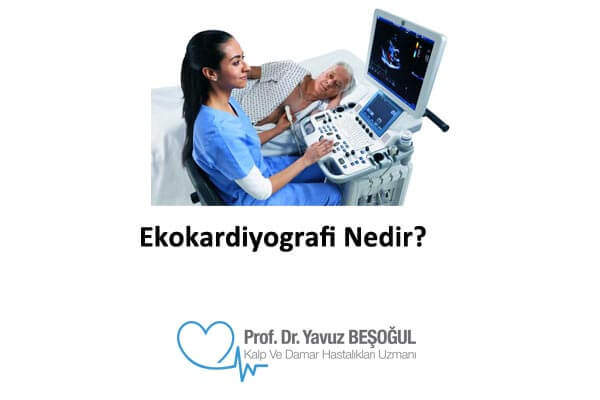Echocardiography, also known as echo, is the ultrasonographic examination of the heart. It is an important detection tool used in the diagnosis of heart diseases and in the post-treatment follow-up process. Echo is based on the principle that the generated sound waves are directed to the patient's heart, the structures in the heart tissue reflect these waves, and they are converted into images in a computer environment.

İçindekiler Tablosu
Who is Eco Applied to?
Echo is a test that can be performed on all cardiology patients who have a history and are at risk. The biggest reason why it is applied to everyone is that it does not contain radiation.
Why is echocardiography important?
Echo provides very valuable information about the health of the heart before treatment. The information it provides about the condition of the heart valves, the size and function of the heart chambers, and the speed of the blood used by the heart affects the diagnosis and treatment decision-making process at the diagnosis stage.
The condition of the heart cavities, the condition of the vessels coming and going from the heart, detection of stenosis or insufficiency in the heart valves, detection of heart holes, and detection of dysfunctions of the heart muscle are performed by echo. In addition, congenital heart diseases can be detected by examining the baby's heart in the womb using echocardiography.
Heart Diseases That Echocardiography Can Diagnose
As we said before, Echo gives very important information and directly affects the diagnosis and treatment of the disease. If we give examples of heart diseases that echo can diagnose, echocardiography is indispensable in heart failure, vascular occlusion and heart valve diseases.
How to Apply Eco?
Before applying the echo, your clothes are removed as it will be applied from the waist up. The technician will then attach electrodes to your body to detect your heart's electrical currents and record images. The technician will also apply a gel to the transducer that improves the transmission of sound waves. He or she will move the transducer back and forth over your chest to record images of the sound wave echoes from your heart. You may hear a pulsating “scream,” which is ultrasound recording blood flowing through your heart.
You may be asked to breathe in a certain way or roll onto your left side.
Echocardiography, also known as echo, is the ultrasonographic examination of the heart. heart diseases It is an important detection tool used in diagnosis and post-treatment follow-up process. Echo is based on the principle that the generated sound waves are directed to the patient's heart, the structures in the heart tissue reflect these waves, and they are converted into images in a computer environment.

Who is Eco Applied to?
Echo is a test that can be performed on all cardiology patients who have a history and are at risk. The biggest reason why it is applied to everyone is that it does not contain radiation.
Why is echocardiography important?
Echo provides very valuable information about the health of the heart before treatment. The information it provides about the condition of the heart valves, the size and function of the heart chambers, and the speed of the blood used by the heart affects the diagnosis and treatment decision-making process at the diagnosis stage.
The condition of the heart cavities, the condition of the vessels coming and going from the heart, detection of stenosis or insufficiency in the heart valves, detection of heart holes, and detection of dysfunctions of the heart muscle are performed by echo. In addition, congenital heart diseases can be detected by examining the baby's heart in the womb using echocardiography.
Heart Diseases That Echocardiography Can Diagnose
As we said before, Echo gives very important information and directly affects the diagnosis and treatment of the disease. If we give examples of heart diseases that echo can diagnose, echocardiography is indispensable in heart failure, vascular occlusion and heart valve diseases.

